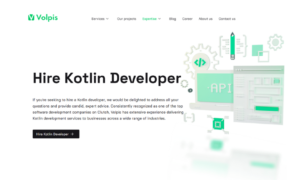The process of becoming a full-stack developer can feel overwhelming. After all, full stack developers are jacks-of-all-trades that understand how to create websites and software using a wide variety of programming languages. This short guide will help you prepare for this career.
How to Start Your Career as a Full Stack Developer
Becoming a full-stack developer is a great idea if you want a high salary, job security, and a challenging career. Here’s how you can become a full stack developer in 6 simple steps.
1) Understand What Skills You Need
If you’re a complete beginner, you’ll require project experience and specialized training to become a full-fledged developer. You’ll also need to understand HTML and CSS development, Javascript development, web development, ReactJS development, Ruby, and Ruby on Rails.
Depending on your field of interest, you may need to specialize. For example, financial coders should know SQL/NoSQL, and medical coders must understand industry-specific coding terms.
2) Determine Your Ideal Timeline
The thought of committing 4 years of your life to a computer science degree will trigger anyone’s anxiety. Still, it’s essential to know that you can become a developer within a shorter period. With that said, the learning format you choose will depend on how much free time you have.
For example, if you have a full-time job and family commitments, take a part-time course. If you have over 10 hours a week to spare, consider immersing yourself in a full-time schooling option.
3) Choose the Right Learning Format
There are four ways to become a developer: coding boot camps, self-guided courses, degree programs, and books/tutorials. With a boot camp, you can learn full-stack web development in 25 weeks, whereas the other learning formats will take anywhere between 45 weeks to 4 years.
Keep in mind that employers will still hire you if you don’t have a computer science degree. If you build a portfolio and ace the technical interview, you’ll quickly get a job in the tech industry.
4) Start Building an Online Portfolio
A portfolio is necessary if you want to make a good first impression. Your portfolio can include school projects or client work, but if you worked on open-source software, your potential employer would love to see it. In the end, you should only showcase projects you’re proud of.
Make sure to describe what technologies you used and your role in the project. Take plenty of screenshots and try to use jargonless language to showcase how you built your program.
5) Look for Your First Full Stack Job
Trying to find a job when you’re experienced is hard enough as it is, but job hunting in a new industry is incredibly stressful and discouraging. Don’t give up! It can take over 9 weeks to land a new role. However, you’ll increase your chances by tailoring your resume to each job posting.
Although you can get a lot of hits on job sites, expand your search to career fairs, LinkedIn Groups, and networking events. Contact companies directly, even if there are no open positions.
6) Do Well on Your Technical Interview
Your interviewer will ask you to take a technical assessment, so they can determine if you have the skills for the job. Keep practicing on online coding platforms, like LeetCode, to ensure you’re ready for the interview. You should also prepare for behavioral questions and verbal explanations.
Prove that you can work with a team. Full stack development is often seen as an introverted career choice, but you’ll have to communicate with your coworkers to finish projects.



































